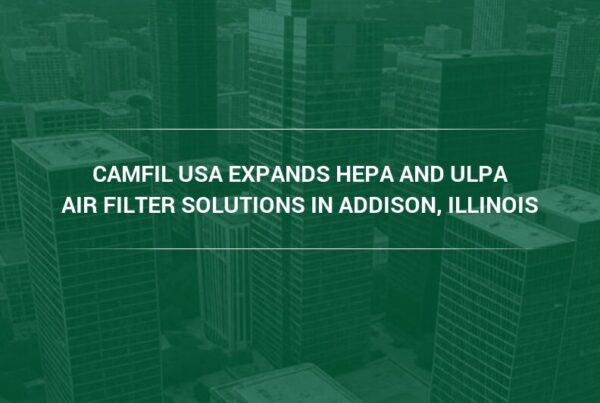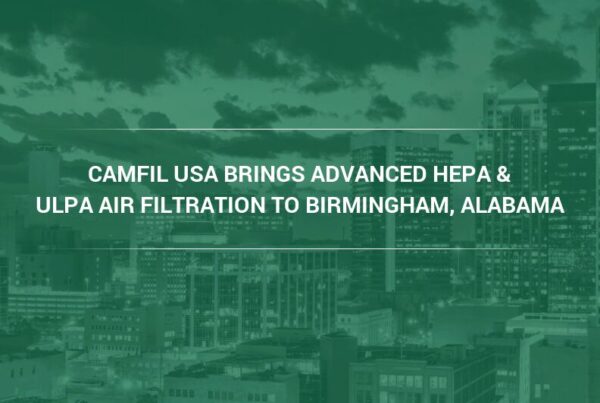According to the U.S. Energy Information Administration, 88% of American households reported some form of air conditioning with 66% of those households having central AC. In the nation’s geographical areas where summer temperatures and humidity are higher, the number is closer to 95%. However, according to the IEA, (International Energy Agency) only 8% of the 2.8 billion people living in some of the hottest areas outside of the US, have air conditioning in their homes.
The positive impact of air conditioning on our lives is hard to overstate. If it’s summer and you’re reading this at home, you are more comfortable than you would be otherwise. If reading online, you wouldn’t be able to do so at the speed and convenience (and low cost) as you do now without air conditioning cooling the servers in data centers that power the internet. If sick or recovering from surgery in a hospital, controlling temperature and humidity promotes healing. Doctors, nurses, other staff members and medical equipment perform better in controlled environments. At work, your employer reaps significant productivity gains in those spaces that are air-conditioned.
One less obvious benefit, and underutilized, of air conditioning, is the necessity to install filters that remove contaminants from the airstream to maintain the performance of the cooling coils. It was discovered early on that dirt accumulating on the coils essentially acted as an insulator and reduced the heat transfer which must occur during the refrigeration cycle. As such, the original purpose of an air filter was to protect the equipment, not the people in the space where the conditioned air was delivered. There’s more to this story and we’ll return to the topic later.
Unfortunately, air conditioning is not free. The components to cool the air, while often included within the same air handling equipment that supplies heat, are costly. In low humidity areas, evaporative cooling equipment can be used, but the majority of systems rely on chemical refrigerants whose impact on the environment must be controlled which further adds to the cost. There are other expenses, but the most obvious expense to operating an air conditioning system is the electrical energy required to power the fan which moves air through the system.
Fan motors can be controlled with variable frequency drives (VFD) to better match output with demand to avoid fan motors running at maximum speed 24/7. Smart thermostats turn the system fans on or off depending on forecasted temperatures, load demands or time of day. Both are effective strategies to reduce fan energy cost, however, there is one more strategy that could be utilized. But first, let’s return to the necessity of air filters in an air conditioning system and the challenges and opportunities they offerAll air filters exhibit resistance to airflow which is known in the HVAC industry as pressure drop and measured in inches of water gauge (in w.g.). This is the difference in air pressure between the upstream and downstream side of a air filter. As air molecules weave through the maze of fibers within the filtration media, air velocity slows much in the same way as vehicle traffic slows navigating crowded, twisty roads. As cars keep coming down the road, they bunch together and traffic slows even further. When this effect occurs in an air filter, there is more air pressure upstream of the filter than downstream and it’s this pressure difference that’s known as pressure drop.
In a standard air filter, the pressure drop increases quickly as more and more dirt particles are filtered out of the air and accumulate on the fibers. This makes the pathways through the media even more difficult for air to pass through than when the filter was clean. As time goes on, less conditioned air is delivered to the space. If it’s a warm, humid day and the space in question is your home, it can become uncomfortable. However, if the space is a data center, the expensive servers could be damaged or if the space is a hospital room, it could be harmful to your health. This is a problem that must be solved.
One solution is to program the VFD (variable frequency drive) to increase the speed of the fan in order to overcome the higher pressure drop caused by dirt loading on the air filter. This forces more air through the system and restores the correct volume of conditioned air into the space which is exactly what we want or what we need. However, each step-up in fan speed requires more electrical energy which increases cost. Here’s where the right air filter can solve one problem and deliver a huge benefit at the same time.
An air filter that’s been engineered and constructed for performance (using techniques borrowed from the aerospace industry to reduce drag in aircraft) will maintain a lower pressure drop which delays the VFD from signaling for an increase in fan speed. The longer the pressure drop can be kept low, the less energy is used. There’s a mathematical formula to calculate the energy savings which states that at the standard rated airflow of 500 fpm, if electricity costs ten cents per kilowatt hour and the fan efficiency is an average of 60%, then for every 1/10” w.g. reduction in pressure drop, the annual energy savings is $34 per year, per full size filter. That’s worth repeating, $34 per year, per filter. Extrapolate that to include all HVAC systems and the number of filters in each one and you can see the potential reduction in energy usage (and the corresponding reduction in carbon footprint) is substantial. In fact, low pressure drop air filters can save more money in energy than they actually cost.
But here’s the huge benefit mentioned before and it’s arguably more important than saving energy and that’s improving indoor air quality. As stated earlier, the coils within the AC system need to stay clean in order to be most effective and today’s high performance air filters do so while maintaining low pressure drop. However, are those filters designed only to protect the equipment? Could they be designed to perform dual functions and protect the people also?
In order to design an air filter to do both requires an understanding of several disciplines such as mechanical, aerospace and material engineering as well as the filtration mechanisms within fluid dynamics. By combining these, air filters on systems that service office complexes, schools, public retail spaces, airports, hospitals and others can be engineered not just with a low resistance to airflow, but also with a high particle capture efficiency on the sub-micron particles known as PM1.
99% of all particles in the air are PM1, less than one micron in size. While the human respiratory system has defenses in place to keep certain particles out, as we’ve seen with COVID-19, there are some particles too small for our bodies to capture. However, air filters with a high particle capture efficiency can capture those particles at a very high rate. But in the past, those filters also came with high pressure drops, sometimes too high for the system fan to overcome.
Thanks to dedicated engineers, high quality raw materials, and manufacturing techniques, high performance air filters exist today that capture and hold these PM1 particles and do so while maintaining a low pressure drop so as to keep operational expenses in check.
About Camfil Clean Air Solutions
For more than half a century, Camfil has been helping people breathe cleaner air. As a leading manufacturer of premium clean air solutions, we provide commercial and industrial systems for air filtration and air pollution control that improve worker and equipment productivity, minimize energy use, and benefit human health and the environment. We firmly believe that the best solutions for our customers are the best solutions for our planet, too. That’s why every step of the way – from design to delivery and across the product life cycle – we consider the impact of what we do on people and on the world around us. Through a fresh approach to problem-solving, innovative design, precise process control, and a strong customer focus we aim to conserve more, use less and find better ways – so we can all breathe easier.
The Camfil Group is headquartered in Stockholm, Sweden, and has 31 manufacturing sites, six R&D centers, local sales offices in 35+ countries, and about 5,200 employees and growing. We proudly serve and support customers in a wide variety of industries and in communities across the world. To discover how Camfil USA can help you to protect people, processes and the environment, visit us at www.camfil.us/
##
Media Contact:
Lynne Laake
Camfil USA Air Filters
T: 888.599.6620
E: Lynne.Laake@camfil.com
F: Friend Camfil USA on Facebook
T: Follow Camfil USA on Twitter
Y: Watch Camfil Videos on YouTube
L: Follow our LinkedIn Page



